When the University of Oregon shut down in March due to the COVID-19 pandemic, second-year student Rory Sweeney left Eugene unemployed and with no idea what her future would hold. She had lost her job in dining services that same week and wasn’t sure when or if the position would become available again.
Sweeney was jobless for three months. After a spring full of searching for work, she took on a position as an entrance coronavirus screener at Coquille Valley Hospital. She worked 40 hours a week for $11.25 an hour. And when COVID-19 cases began cropping up in the hospital in mid-July, it became increasingly stressful to go to work every day.
“I was making minimum wage, getting no hazard pay, no paid time off,” Sweeney says. “And there was no option to not work because I have to pay thousands in student loans. I needed all of that money and funding.”
Sweeney continued to work at the hospital until she returned to the University of Oregon in September. She regained her job at Hamilton Dining and was promoted to shift lead, a position that oversees all food stations in the building and pays $13.00 an hour. The work has gotten more stressful this year, she says, with multiple new COVID-19 protocols to juggle on top of continuing anxieties about her safety.
Sweeney now attends classes full-time and works up to 25 hours a week. Her parents pay her $700 rent, leaving Sweeney responsible for groceries, car insurance, gas, university tuition and fees. In addition to these expenses, the three months of unemployment she faced in the spring have forced her to take out about $5,000 in student loans, five times more than she initially planned. Receiving economic assistance from the government, she says, would have made day-to-day life much more manageable.
But when stimulus checks reached millions of Americans’ bank accounts in the spring of 2020 and winter of 2021, Sweeney received nothing. She was claimed as a dependent on her parents’ tax returns, rendering her and 15 million other dependents in the United States ineligible for the stimulus money.
Adult dependents are people ages 19 and older who rely on another taxpayer for financial support. These people, 54 percent of whom are students, were left out of the first two rounds of stimulus checks aimed to ease economic hardships caused by COVID-19. Working college students’ exclusion from the federal stimulus has forced many to take on additional work and loans to stay afloat, all while fighting the negative mental health impacts of a global pandemic.
The third pandemic economic relief package passed by the Senate on March 6, 2021, includes adult dependents and 17- and 18-year-olds in the list of those receiving $1,400 payments. This payment will be added to the household total, rather than provided to dependents directly. Experts are predicting that the first round of direct deposits could be sent to American homes by mid- to late-March. For the 15 million dependents who have not yet received aid, this package may provide some relief.
Americans have reaped the benefits of two direct stimulus checks since the pandemic began. American adults receiving less than $75,000 a year received $1,200 in the spring of 2020 and $600 in the winter. Adults receiving between $75,000 and $87,000 a year received a smaller amount. No one above that threshold received a payment. Eligible married couples filing jointly received $2,400 in spring and $1,200 in winter. Parents of children under 17 received $500 in spring and $600 in winter for each child claimed as a dependent.
Parents of dependents between the ages of 17 and 24 did not receive any extra money, and these dependents did not receive any stimulus. Claiming college students as dependents is typically appealing to parents because it makes them eligible for tax credits. This year, doing so excluded students and their parents from receiving much-needed economic assistance.
Inclusion in a third package does not erase the challenges these dependents already endured. Gilbert Rogers, Assistant Director of the UO Financial Wellness Center, says many working college students found themselves in financially unstable situations during the pandemic, and that losing out on government stimulus has not helped.
“It put a lot of dependent students who were out working, making money on their own, in a rough situation,” Rogers says. “When you’re in that middle area, you kind of got left out, unfortunately.”
Darren Diga, a third-year UO student and a receptionist for Tykeson College and Career Advising, says that a year without help has left her incredibly frustrated.
“If anyone needs it, we do,” says Diga. “Having a financial burden and knowing that the government can’t help you because you don’t fit their qualifications sucks. There are things I have to pay for too, you know?”
Diga was scheduled to work 15 hours a week at Tykeson Advising before the initial shutdown in March 2020. After her office went entirely remote, her hours were cut by more than a third to accommodate for a reduction in student traffic. For three months, she worked from home in Hawaii while continuing to pay rent on her house in Eugene, picking up shifts from her coworkers to supplement her reduced income. She tried to apply for unemployment benefits but was unsuccessful.
Part-time workers generally aren’t qualified for traditional unemployment benefits. Some states even have restrictions that specifically prevent students from achieving eligibility. The Pandemic Unemployment Assistance Program (PUA) has temporarily expanded benefits to include part-time workers, specifically those who are unable to work due to COVID-19. But states are individually responsible for administering the program, and due to outdated computer systems and systematic errors, Oregon’s employment department left thousands without benefits for months and passed others over entirely.
Some individuals were denied unemployment based on a technicality. Diga says she received a phone call from PUA informing her that she was ineligible for benefits because she worked for a university, even though she was a part-time worker and student whose hours had been affected by COVID-19.
Despite the challenges, Diga says that continuing to work allowed her to remain almost entirely self-supporting throughout the last year, regardless of her status as an adult dependent.
“I’m pretty proud that I’ve been able to take care of myself, even my rent,” she says. “My mom didn’t have to help me at all.”
To claim a dependent on tax returns, taxpayers must cover more than half of their dependent’s expenses. But parents often claim their working college students, as they have for years, without much consideration for how their financial situations have changed. And between tuition, fees, student loans and rent, 50 percent is still a tremendous amount for student workers to pay. At the University of Oregon, for example, tuition and fees are about $14,000 per year for in-state students and $39,000 for out-of-state students.
Hannah Jaques’ parents cover her tuition and leave her responsible for paying her rent. Jaques, a third-year student at the UO, was planning to go home to California to work a restaurant job for the summer before COVID-19 hit. For safety reasons, she ended up staying in Oregon, suddenly without a plan for how she would pay for housing.
When stay-at-home orders were enacted in March 2020, a majority of states introduced eviction moratoria to protect renters and their homes. On Sept. 1, 2020, the CDC announced a halt on evictions at the federal level for those who could not make rent due to the pandemic. The Biden administration has since renewed the moratorium to last through March 2021.
However, the order only protects those facing economic challenges because of the pandemic. Students working low-wage jobs and paying for a high cost of living were already in precarious financial situations prior to COVID-19, and do not necessarily qualify for protection. According to UO Advocates, a campus volunteer organization, 42 percent of surveyed UO students were sometimes or often concerned that they would not be able to cover their housing costs during the pandemic.
Jaques says that uncertainties brought on by COVID-19, in addition to her preexisting financial obligations, have made her uneasy about her living situation.
“It’s made me question everything I’m doing,” Jaques says. “I’m paying rent for an apartment in Eugene, but there’s nothing holding me down to Eugene. I could really be anywhere. But my roommate and I signed a lease, and we don’t want to break that lease.”
After a stressful spring, Jaques got a job as a personalized social worker at a foster home, where she currently cares for three girls with different disabilities. Throughout the summer, she worked 40 hours a week, but upon returning to school in the fall, she was forced to drop to 20 hours.
Jaques’ shifts at the foster home are between nine and 10 hours long, and when she gets home, she says the last thing she wants to do is open her computer and do schoolwork. Her classes are rigorous and time-consuming, preventing her from working as much as she’d like to in order to be financially comfortable. Her rent is $747 a month, and her monthly paycheck is $900 before taxes, leaving her with less than $153 to fulfill other needs.
“When I was working 40 hours, I was able to very comfortably pay my rent here,” Jaques says. “With school, I can’t work as much. Now my paychecks aren’t as great, and I’ve noticed that in the last months. I’ve noticed that I’m not as comfortable.”
Jaques is not the only student worker to feel her university workload impacting her finances. Many students have had to make difficult decisions in the last year when it comes to balancing work and school. Since the onset of COVID-19 in the U.S., dropout rates have increased, particularly among low-income students. According to a U.S. census survey, 42 percent of students who didn’t return to classes in the fall cited “unable to pay after income loss” as their reason.
Additionally, working through the pandemic while navigating a full course load online has had a negative emotional toll on many students. Kat Abrams, a third-year student at the UO, says that she has struggled with her mental health throughout the last year.
Abrams joined the Corona Corps in September, in addition to her job as a student receptionist at Tykeson Advising, and works around 22 hours a week between the two. At the end of the fall quarter, she says she found herself either working or doing homework during every hour of the day.
“Last term it was too much. I kind of broke down by the end,” Abrams says.
Job losses and financial insecurity caused by the pandemic have severely impacted mental health in many young adults. According to Kaiser Family Foundation, 56 percent of 18- to 24-year-olds have reported symptoms of anxiety and/or depressive disorder in the last year.
For the sake of her mental health, Abrams says she is taking fewer classes so that she can focus on work and on herself. She has been able to rely on her parents to ease some of the financial strain of the last year, an option she says she feels extremely lucky to have.
“Obviously, I want this stimulus money to go towards those that need it the most,” Abrams says. “But going to college is so expensive, and I do think that there are college students that could definitely benefit from the stimulus money.”
Stimulus packages in 2020 were structured similarly to bills passed during other crises, such as the 2008 recession. Adult dependents were also not included in these packages. But this recession is unlike the crisis in 2008, when students continued to attend universities in-person and consistently kept their on-campus jobs. According to a College Lab/Axios poll, 38 percent of college students lost work following the shutdown in March 2020.
The Center on Budget and Policy Priorities, a research institute that analyzes federal budget priorities, says that the added cost of including adult dependents in stimulus relief is minimal and that there was “no clear policy rationale” for the decision to exclude them from these benefits in the first two packages.
For many students, the damage of a year without federal assistance has already been done, even with $1,400 checks on their way. Sweeney says the events of the last year have increased her student loans to a degree that will permanently impact her financial security. Right now, she’s working as much as she can without compromising her education, and it’s still not enough.
“The goal of the stimulus is to help the working class. I feel like I’m a part of the working class. I do work, and I provide for the economy,” Sweeney says. “I have a need for income, but I can only do so many hours of work per week. And I believe the stimulus would have helped me balance that out.”
After packaging and sealing orders, Rory Sweeney checks the names printed on the receipts before bringing them out to customers in the Hamilton Dining Hall at the University of Oregon. Unlike during pre-COVID-19 times, most of Gastro Kitchen’s customers order through either Grubhub or an app called Tapingo, unless they’re paying with cash.


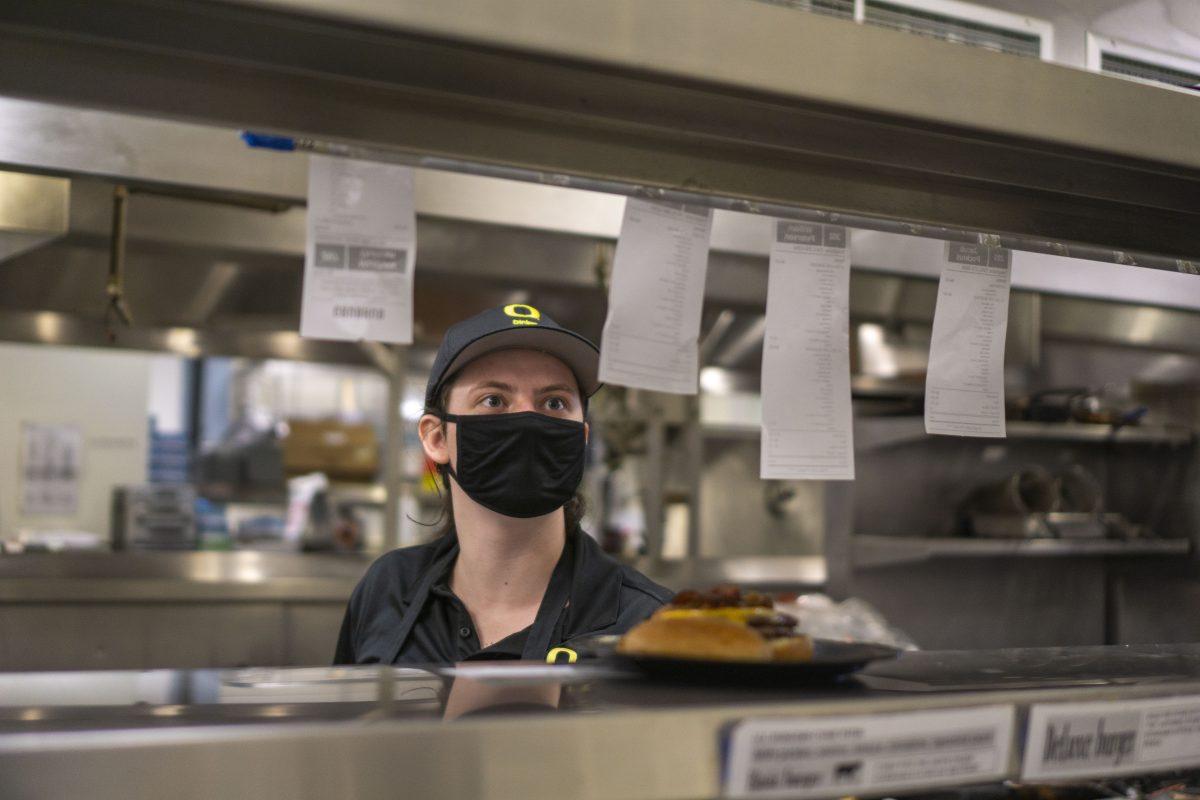
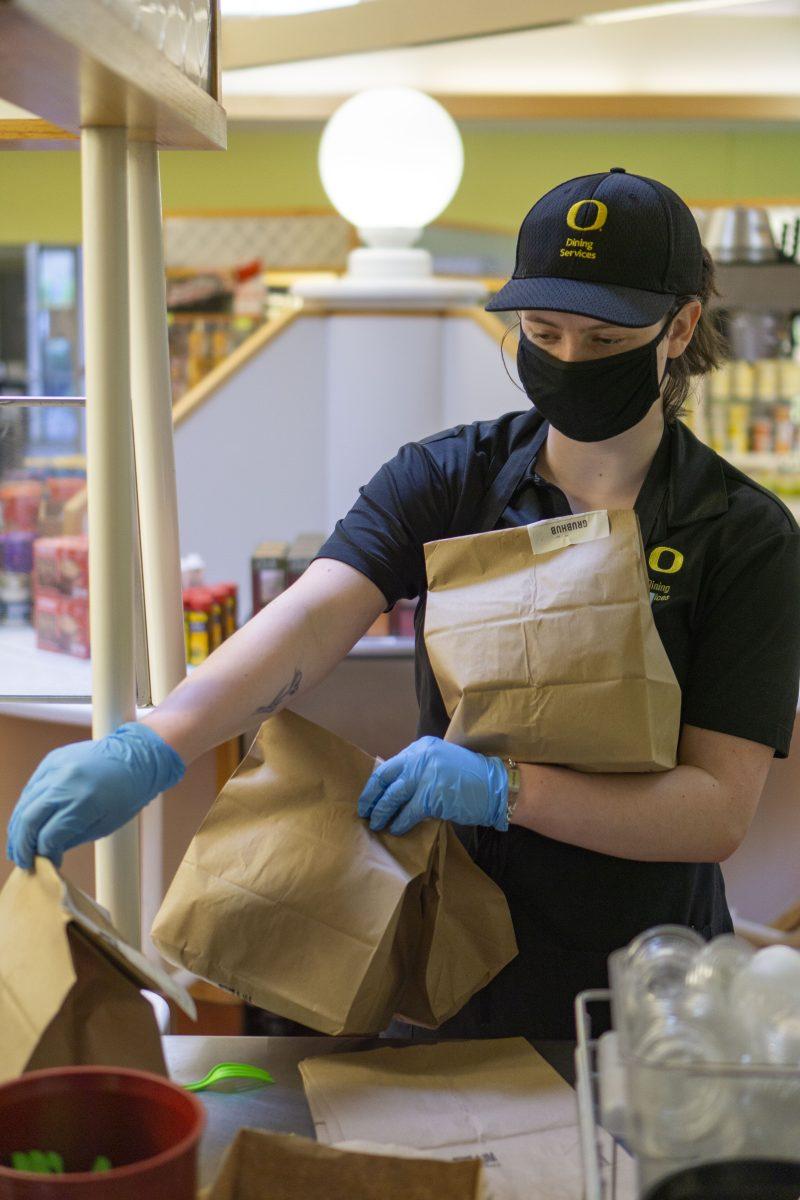

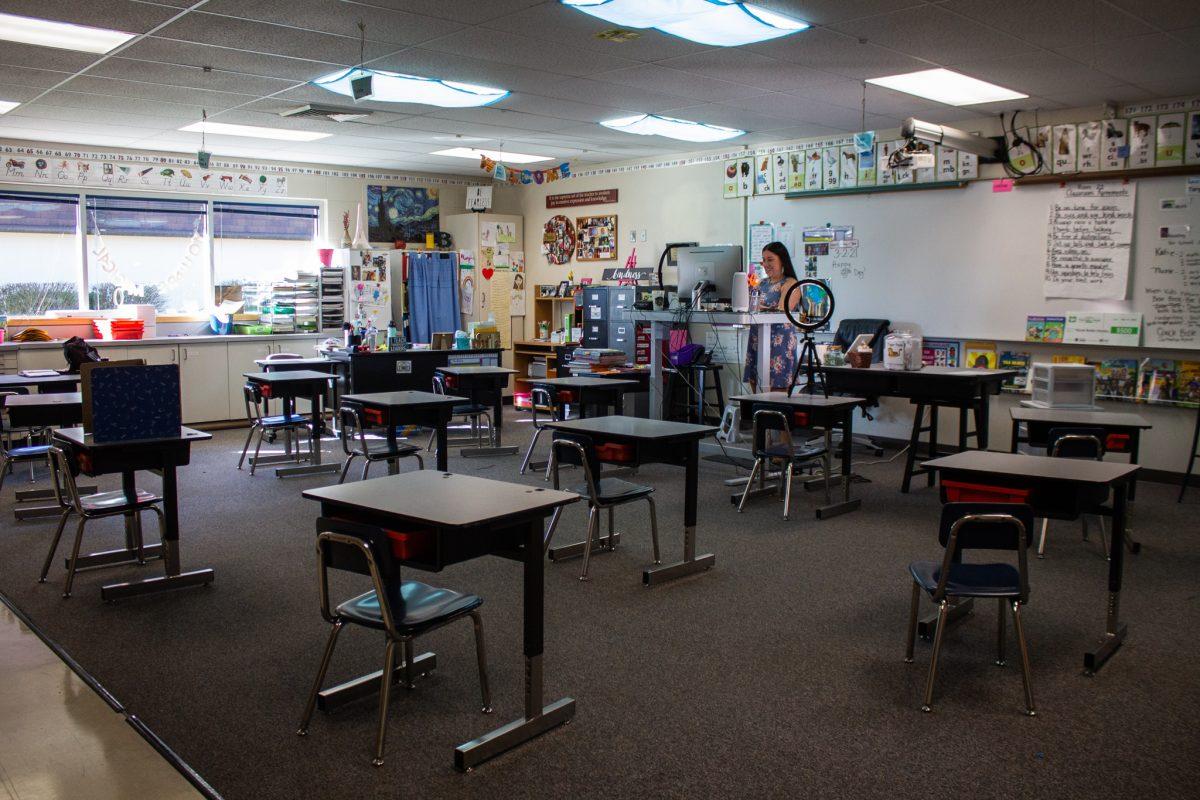
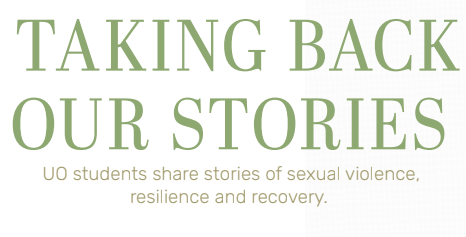
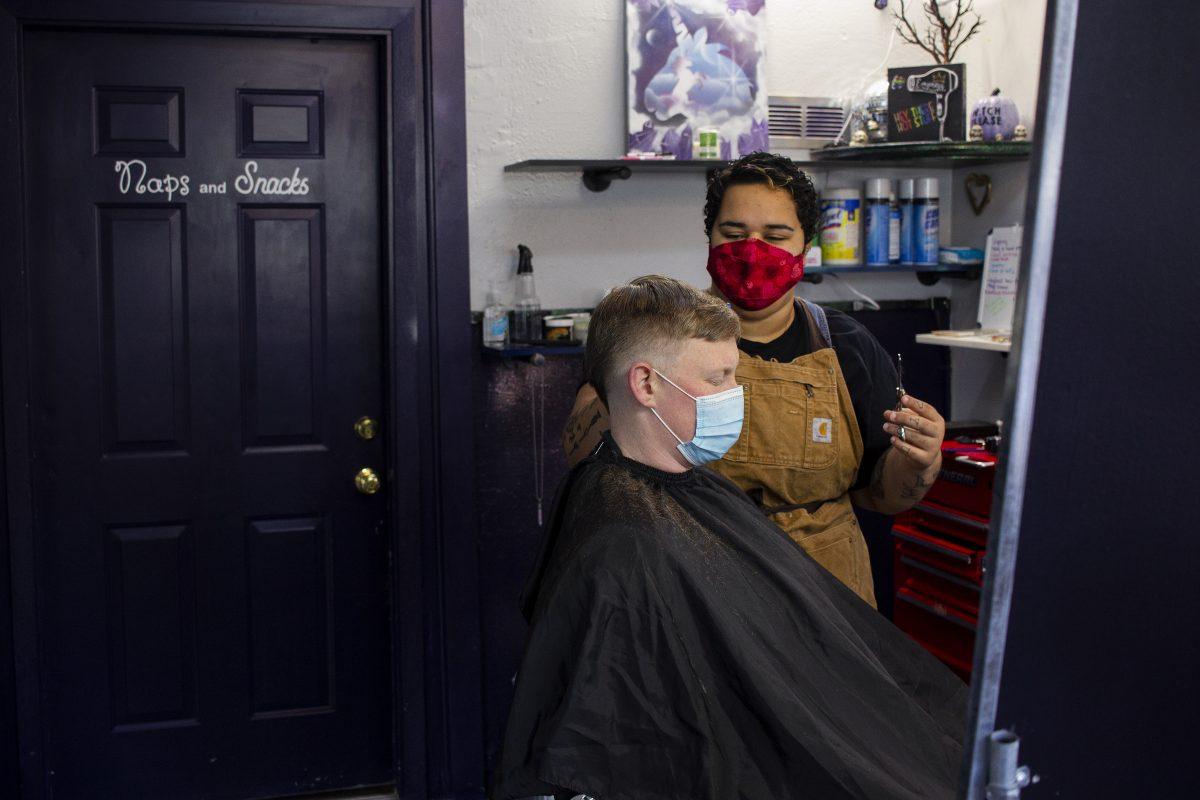


![[Photo Courtesy of the Lara Family]
Ruben embraces his beloved childhood goat, Katrina.](https://ethos.dailyemerald.com/wp-content/uploads/2025/05/katrina-1-1060x1200.jpg)


